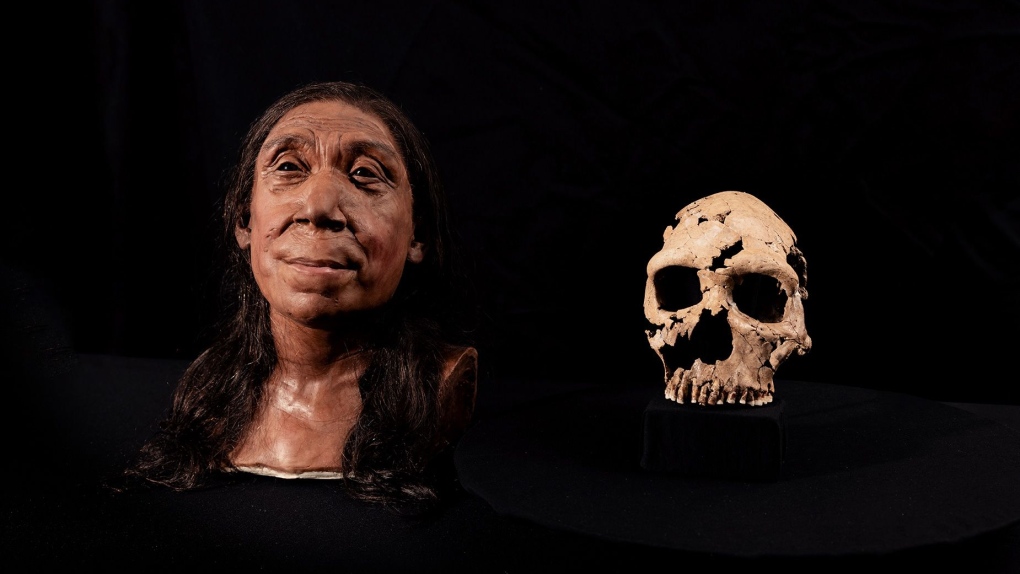
Facial reconstruction reveals what a 40-something Neanderthal woman may have looked like
CTV
Scientists studying a Neanderthal woman's remains have painstakingly pieced together her skull from 200 bone fragments to understand what she may have looked like.
A 40-something woman was buried in a cave 75,000 years ago, laid to rest in a gully hollowed out to accommodate her body. Her left hand was curled under her head, and a rock behind her head may have been placed as a cushion.
Known as Shanidar Z, after the cave in Iraqi Kurdistan where she was found in 2018, the woman was a Neanderthal, a type of ancient human that disappeared around 40,000 years ago.
Scientists studying her remains have painstakingly pieced together her skull from 200 bone fragments, a process that took nine months. They used the contours of the face and skull to guide a reconstruction to understand what she may have looked like.
The striking recreation is featured in a new documentary “Secrets of the Neanderthals” produced by BBC for Netflix, which is available for streaming on Thursday.
With pronounced brow ridges and no chins, the skulls of Neanderthals look different from those of our own species, Homo sapiens, said Dr. Emma Pomeroy, a paleoanthropologist and associate professor with the University of Cambridge’s department of archaeology who unearthed the skeleton and appears in the new film. The Shanidar Z facial reconstruction suggests that these differences might not have been so stark in life, Pomeroy said.
“There is some artistic license there, but at the heart of it is the real skull and real data on what we know about (these) people,” she said.
“She’s actually got quite a large face for her size,” Pomeroy added. “She’s got quite big brow ridges, which typically we wouldn’t see, but I think dressed in modern clothes you probably wouldn’t look twice.”
